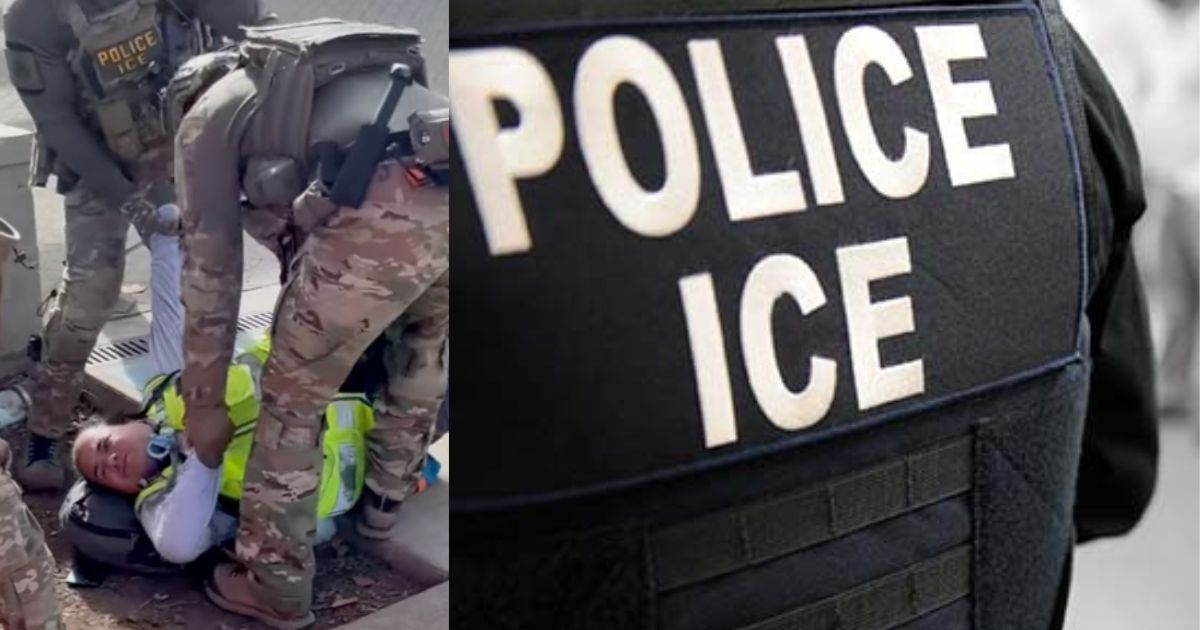Amid continuous news of Immigration and Customs Enforcement (ICE)brutality, a disturbing video from Portland has sparked outrage nationwide. The video shows ICE agents violently arresting a blind protester during a peaceful demonstration against President Donald Trump’s immigration crackdown.
The footage quickly went viral, showing agents dropping the man on his head before dragging him away as onlookers shouted in horror.
The man in the video has been identified as Quinn Haberl. He is a visually impaired activist and only 4 feet 6 inches tall. He was wearing a bright neon vest and sitting quietly near a marked blue line outside a Portland ICE facility.
It is the blue line that marks the start of federal property. Haberl’s position on the ground indicated he had been seated on the public side of the line and did not trespass.
ICE detain blind protester—drop him on his head onto pavement.
“I think they wanted to make a point,” said the 4’6″ blind man.
“So they picked the weakest person they could find and made a big show out of it.”
He’s known for dancing and good times while protesting—a joy to be… pic.twitter.com/hREMQD4L32
— LongTime🤓FirstTime👨💻 (@LongTimeHistory) October 22, 2025
Despite that, several ICE agents approached him. Holding his white cane, Haberl seemed unaware of their movement. Within moments, the agents surrounded him. One grabbed his arm, another his leg, and soon he was lifted, dropped, and pulled to the asphalt. Frightened witnesses began yelling, “He is blind!” as officers dragged him toward the building.
As seen in the video, the agents appeared to lose their grip, causing both Haberl and the officers to tumble to the ground. Despite Haberl being blind, he was pinned down moments later and then handcuffed. His walking cane was picked up by one of the officers as they pulled him into the facility’s driveway.
Later, Haberl was released and taken to a hospital. The doctors there treated him for several bruises. Speaking afterward to The Oregonian (Via The Mirror US), he described his ordeal as deliberate intimidation. “I think they wanted to make a point,” he said. “So they picked up the weakest person they could find and made a big show out of it.”
He recounted more details in another interview with KGVW, recalling how quickly the encounter turned physical. “I was sitting in the grass and my legs were just barely in the driveway,” he told the station. “They came up, I think there were six of them, and they grabbed me and they started to drag me across the driveway on the ground.”
View this post on Instagram
Haberl added that the experience left him terrified and disoriented. “I’m only 4 foot 6 and I can’t see, what harm was I gonna do to them?” he said. “It was scary, being dragged across the ground when you can’t see what’s happening around you.”
Given the kind of reaction that the video received, the Department of Homeland Security (DHS) defended the agents’ actions. In a statement, the department described Haberl as a “rioter” who ignored repeated orders to stay off federal property.
“This rioter was arrested after he blatantly disobeyed law enforcement orders to remain off federal property, obstructed law enforcement, and continued to block the driveway so vehicles could not enter or exit the ICE facility,” DHS said.
The incident has further fueled outrage in Portland, a city that has become the center of national attention over protests and immigration enforcement. President Trump has called Portland “war-torn,” describing it as a city “ravaged by undocumented immigration and crime.”
It is important to note here that there was previously a restraining order, blocking the administration from deploying troops in Portland. However, earlier this week, the 9th Circuit Court of Appeals lifted the order and thus federal forces were free to come back to Portland.
The court’s majority sided with the President, stating, “After considering the record at this preliminary stage, we conclude that it is likely that the President lawfully exercised his statutory authority.”
Unfortunately for people like Haberl, such displays of authority leave deeper wounds than just his bruises. To him, the way he was treated wasn’t about enforcement; it was about fear. “They wanted to scare people like me,” he said. “And they wanted everyone else watching to be afraid too.”













